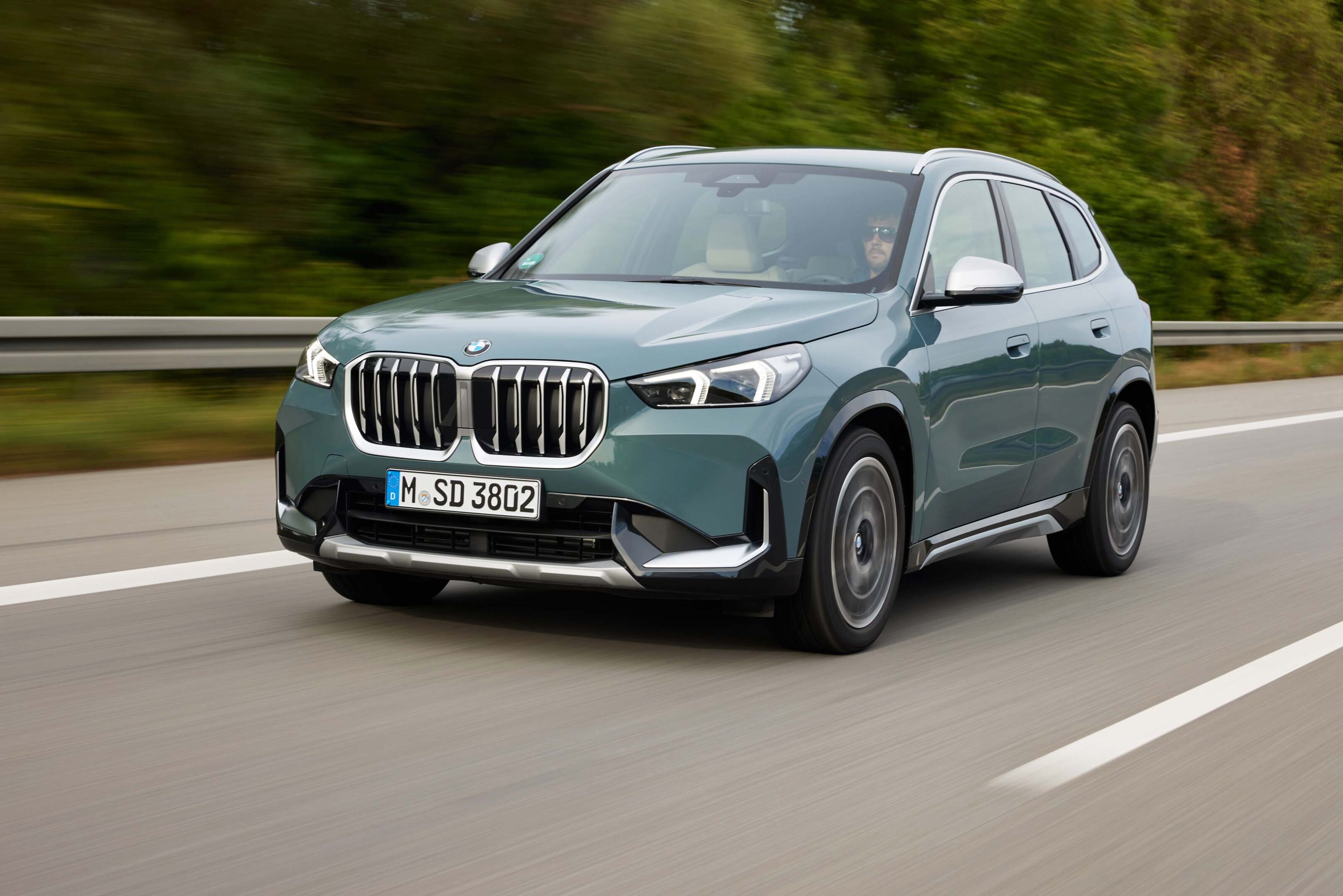Score breakdown
Things we like
- Bigger and bolder than before, benefiting interior space
- BMW’s curved screen looks very appealing
- It’ll slot into life pretty easily
Not so much
- Lacks BMW’s usual handling verve
- Basic petrol engines a little overworked
- Other SUVs offer more glamour or intrigue
BMW’s smallest SUV has grown up. While the X1 launched in 2009 as a slightly awkward-looking entry point to posh crossover ownership, it’s matured nicely into its third generation.
Its dimensions all but match the original X3, much in the same way a 3 Series now fills the footprint of an old 5.
While we might normally chastise a car-maker for needlessly enlarging its cars, the X1 wears its growth very well, in both styling and practicality.
This is one of the smarter, less controversial BMW designs of recent years, boasting plentiful room and some grown-up technological advances inside.
June 2023: BMW X1 M35i revealed, Australia confirmed
BMW has unveiled a new flagship in its compact X1 range, expected to be priced above the $82,990 iX1 electric SUV.
Learn all about the performance-focused X1 M35i at the link below, and continue reading here for wider 2023 X1 range pricing and features.
March: New BMW X1 driven in Australia
The new BMW X1 is now on sale in Australia, and we’ve driven it. We’ve also driven its electric sibling, the iX1, in Europe. Links to both stories are below.
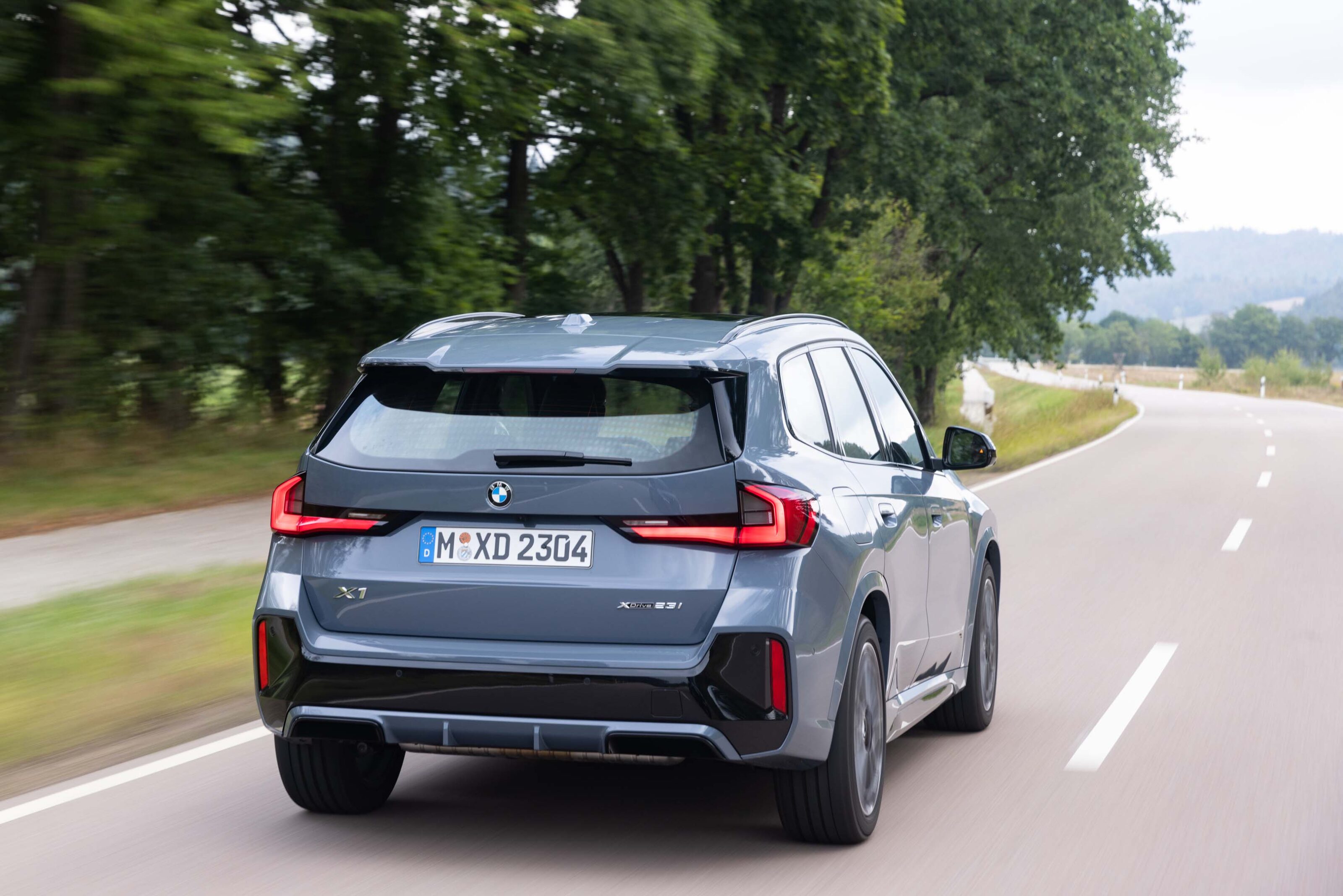
STORY CONTINUES: BMW X1 international review
Jump ahead
- How much is it, and what do you get?
- How do rivals compare on value?
- Interior comfort, space and storage
- What’s it like to drive?
- How is it on fuel?
- How safe is it?
- VERDICT
How much is it, and what do you get?
The third-gen X1 will launch in Australia later this year with a simple line-up consisting of two turbo-petrol engines.
The X1 sDrive18i kicks things off at $53,900 (before on-road costs).
A 1.5-litre three-cylinder drives the front wheels through a seven-speed dual-clutch automatic gearbox. Peak power is 115kW, enough to hustle its 1.5-tonne frame to 100km/h in 9.2 seconds. Not exactly quick, but enough for day-to-day life.
If performance is more of a concern, you’ll be better served by the $65,900 (before on-road costs) X1 xDrive20i, which has a 2.0-litre four-cylinder driving all four wheels – again, through a standard seven-speed dual-clutch auto – with 150kW yielding a sprightlier 7.1sec sprint time, aided by some mild-hybrid boost.
Much more powerful plug-in hybrid versions, as well as the fully electric iX1, will follow in due course. BMW Australia has opted not to bring over the diesel versions that European buyers get to choose from.
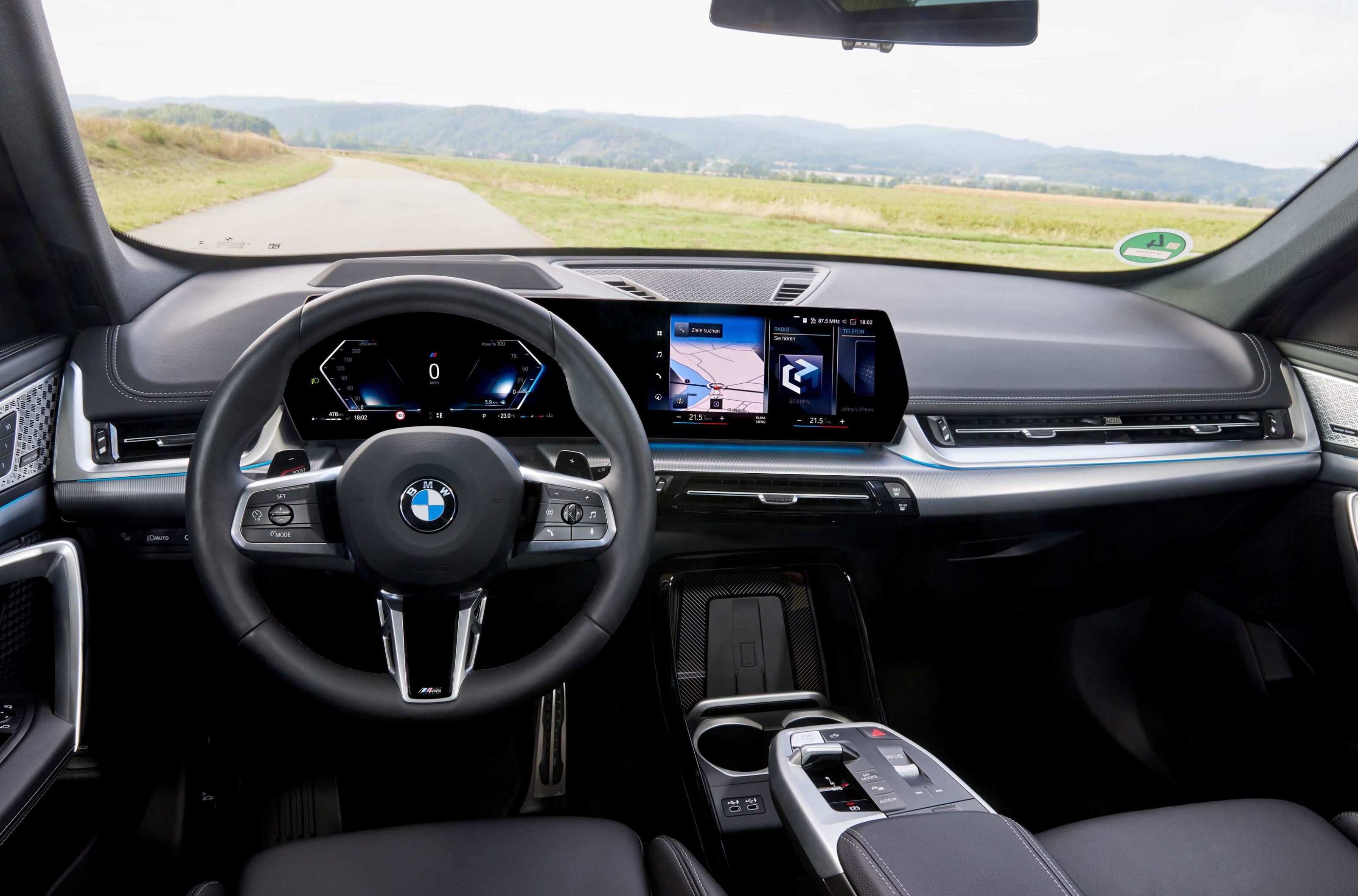
Standard equipment is strong, the X1 benefiting from BMW’s luscious new curved display which runs an up-to-the-minute operating system.
Adaptive headlights, a head-up display and park assist with a whole gamut of cameras help add to the techy feel on board.
There’s no longer such a pervading sense of ‘entry level’ about this car. Upgrading to the 20i brings heated front seats, lane-departure systems and inch-bigger 19in alloys to go with its extra power.
Extra option packs help top up the standard equipment in simple – if slightly pricey – steps.
A $3000 M Sport pack for the 20i brings adaptive M suspension as well as a host of styling tweaks – chintzier wheels included – while both versions gain a Harman Kardon stereo, panoramic sunroof and sliding rear seats via an Enhancement pack. Massaging seats also lie among the options to help up the feeling of maturity.
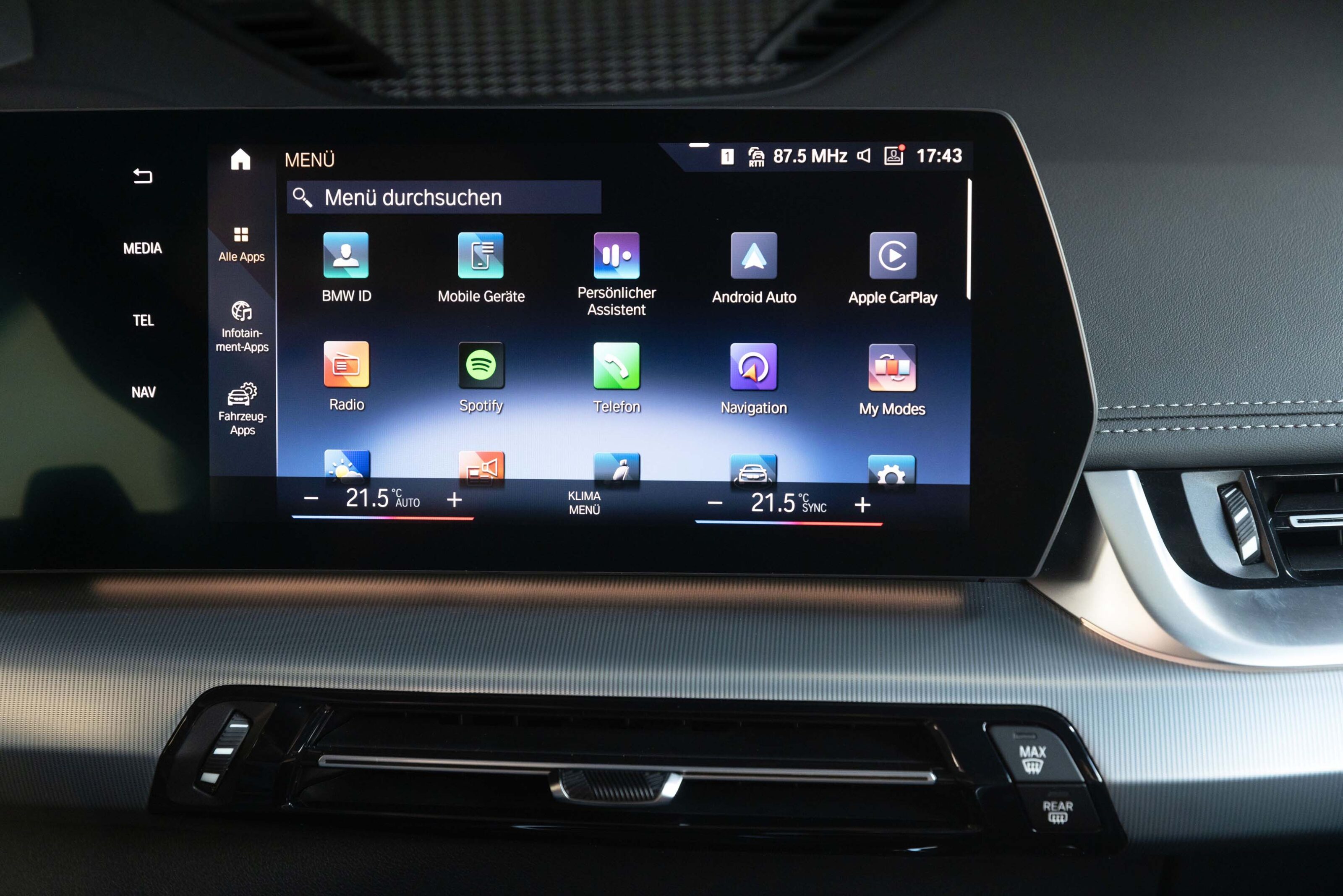
How do rivals compare on value?
A comparable Mercedes GLA will set you back similar money, a 120kW GLA 200 coming in at $60,688 and a 165kW GLA 250 4Matic costing $74,245 (both before on-road costs). You’ve also the option of the slightly larger GLB; it’s roughly a four-grand upgrade but offers a third row of seats for extra family friendliness.
The xDrive20i slightly undercuts a comparable Range Rover Evoque – the $67,200 P200 – while the 131kW Lexus UX250h is a touch less powerful but a decent amount cheaper, starting at $52,025 (both before on-road costs).
You’ll save yet more money if you’re not sold on a premium badge: a Ford Escape, Hyundai Tucson or Kia Sportage with a relatively similar tech spec will set you back less than $50K. The X1 does at least pack most of the kit you’d ever rationally need as standard, though.
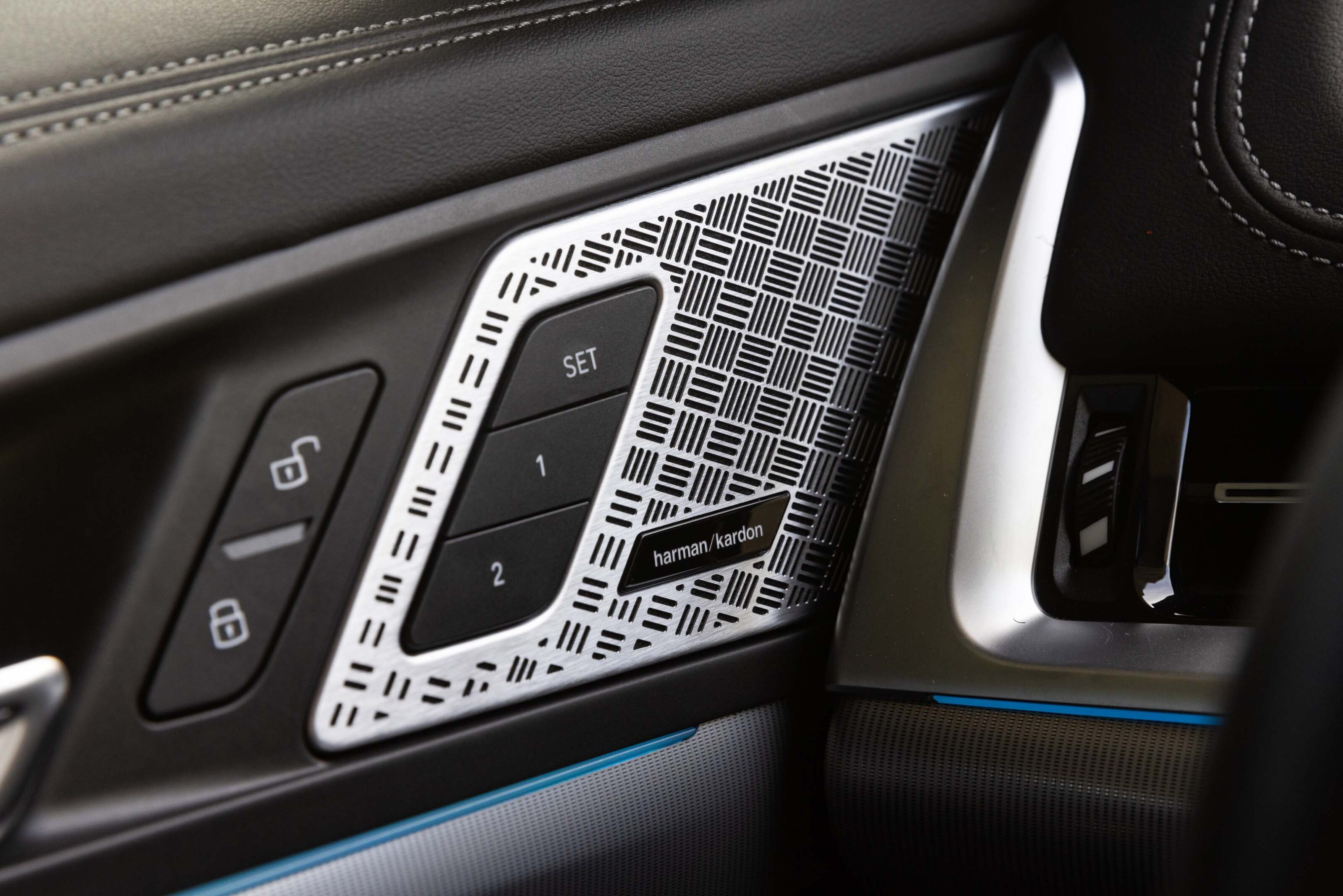
Interior comfort, space and storage
The open-plan feeling dashboard – aided by BMW’s new curved touchscreen and its major spring clean of traditional switchgear – is shared with the 2 Series Active Tourer, a car that doesn’t get to escape Europe for Australian shores.
But the X1 fills the gap nicely – there’s definitely a bit of a late-90s MPV vibe to the interior, which is vehement praise rather than criticism. For years, car interiors have favoured earnest tones and a feeling of cosiness as ‘premium’.
This is BMW claiming back brightness and roominess as a virtue, and while you might miss iDrive’s famous rotary wheel when you first navigate the vast touchscreen, there’s no doubt this is a car well suited to the task at hand.

There’s another 22mm in the wheelbase over the outgoing X1, which will be immediately obvious to anyone climbing into the back.
Rear-seat passengers will be basking in the kind of room normally afforded to them by SUVs a size bigger, and those rear seats can slide fore and aft by 30mm as well as recline.
With some inevitability, the battery pack of the iX1 eats away at rear space a little (as well as deleting the seat-sliding mechanism), but nothing fatal. The petrol X1’s boot is 50 litres larger than before, now peaking at 540 litres with the seats up and 1600 litres when they are folded, with an electric tailgate at all spec levels.
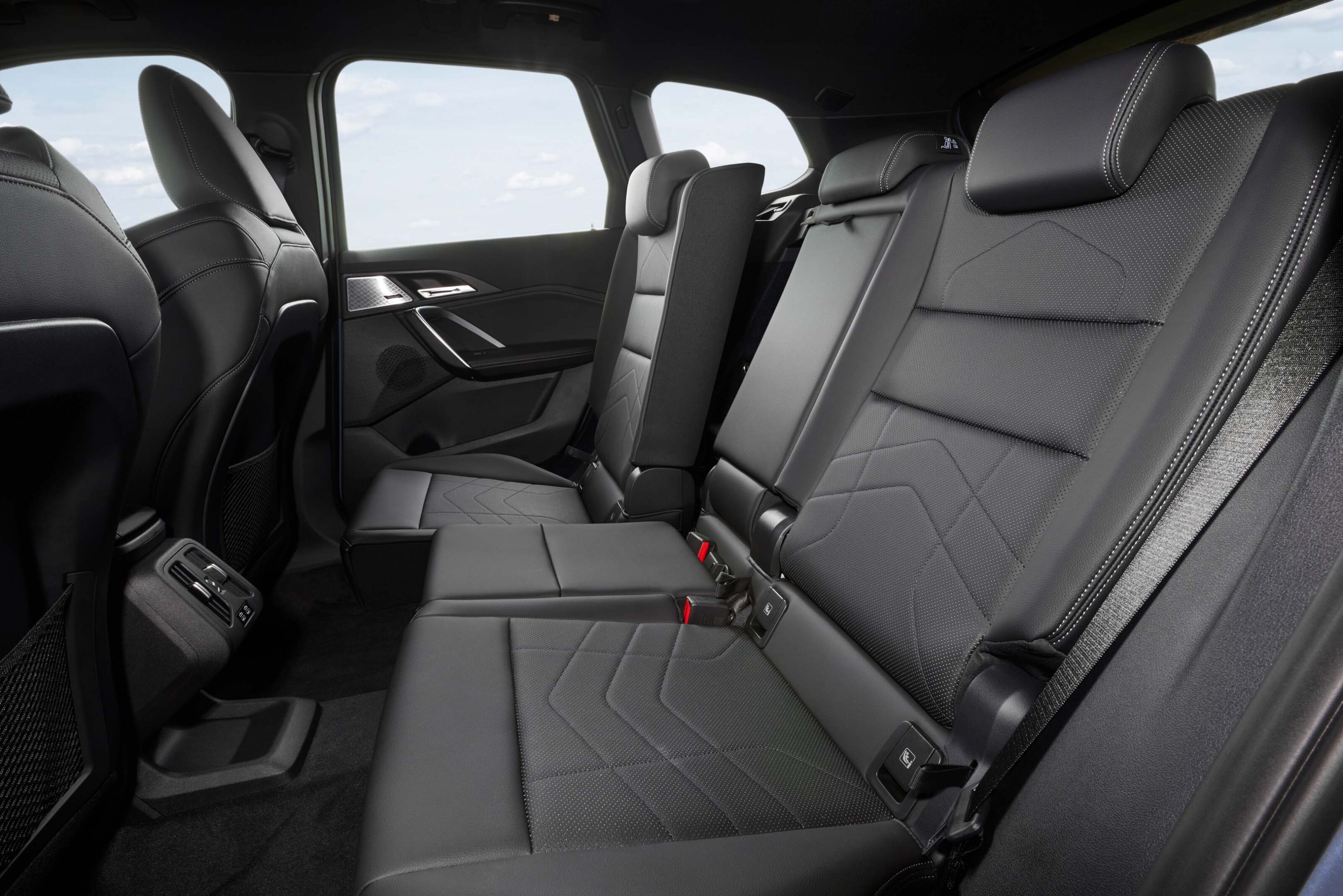
The touchscreen hoovers up lots of buttons – climate control included – but if you’re a bit confused by the array of icons on the screen, there’s some pretty natural voice control to take advantage of.
Say “I’m a little warm” and it’ll crank the temperature down. Alongside the gear selector being a small toggle rather than a stick, this contributes to airiness and roominess up front and lots more room for knick-knacks, with a ‘floating’ centre console allowing you to hide some of it away a bit too.
But placing the wireless phone charger upright – so your phone faces outwards into the cabin in a potentially distracting manner – feels like a slightly duff move.
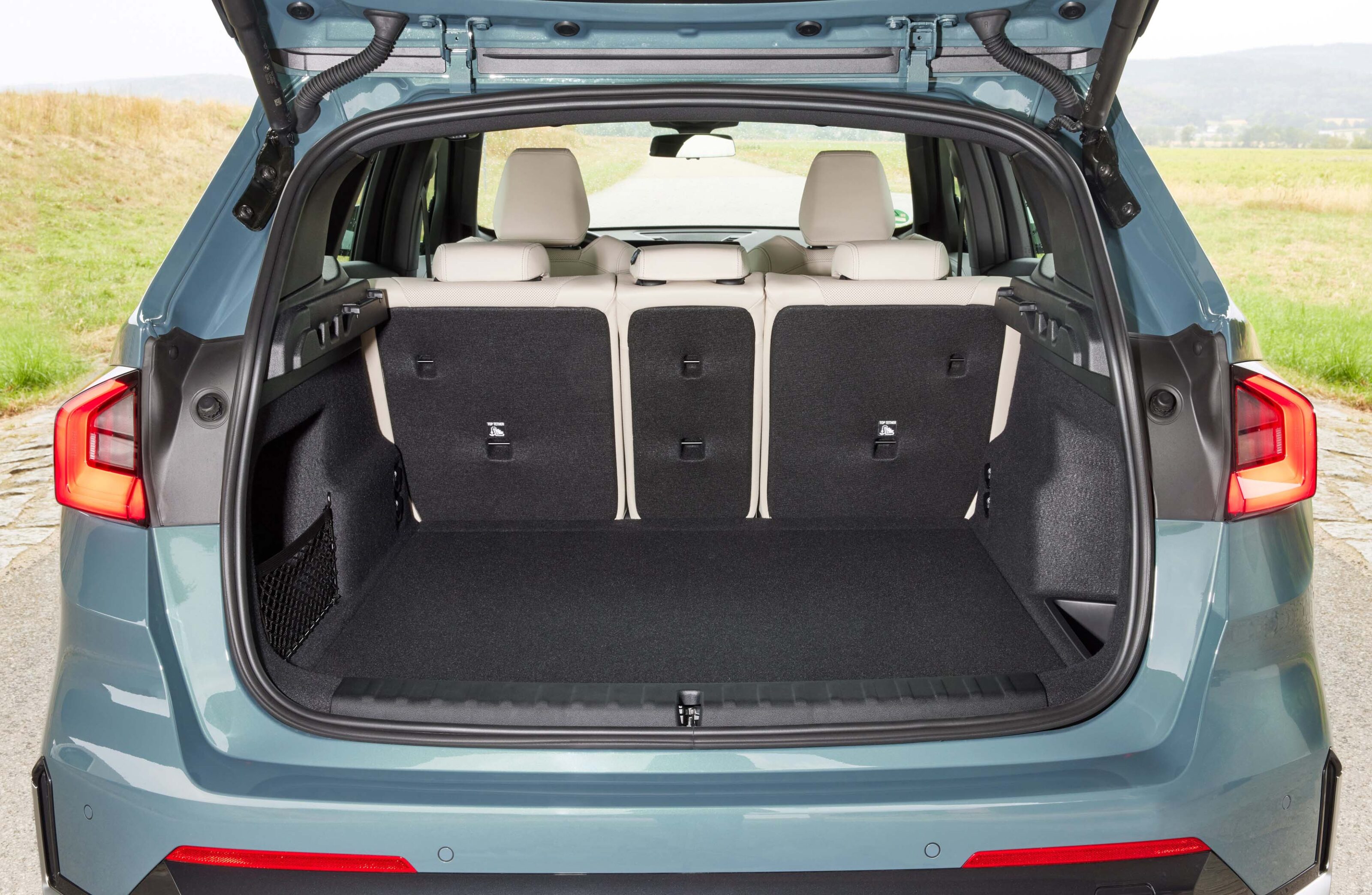
What’s it like to drive?
This is the traditional hunting ground of BMW’s offerings, but it’s where the petrol X1 impresses least.
The seven-speed transmission is rather hit-and-miss at finding the right gear, and there are no paddles on the wheel to help out unless you go for pricey M Sport trim. Which feels very un-BMW.
A vocal and coarse engine in the 20i under high revs is unrefined enough that the diesels offered in Europe are preferable. Mind you, being able to pull the left paddle in M Sport cars for another 14kW of mild-hybrid boost is a nice touch and useful for overtakes.
We’re yet to try the entry 18i but, hopefully, it’ll deliver a little better refinement than the 20i – or compensate for any volume with a more interesting three-cylinder thrum on full throttle.
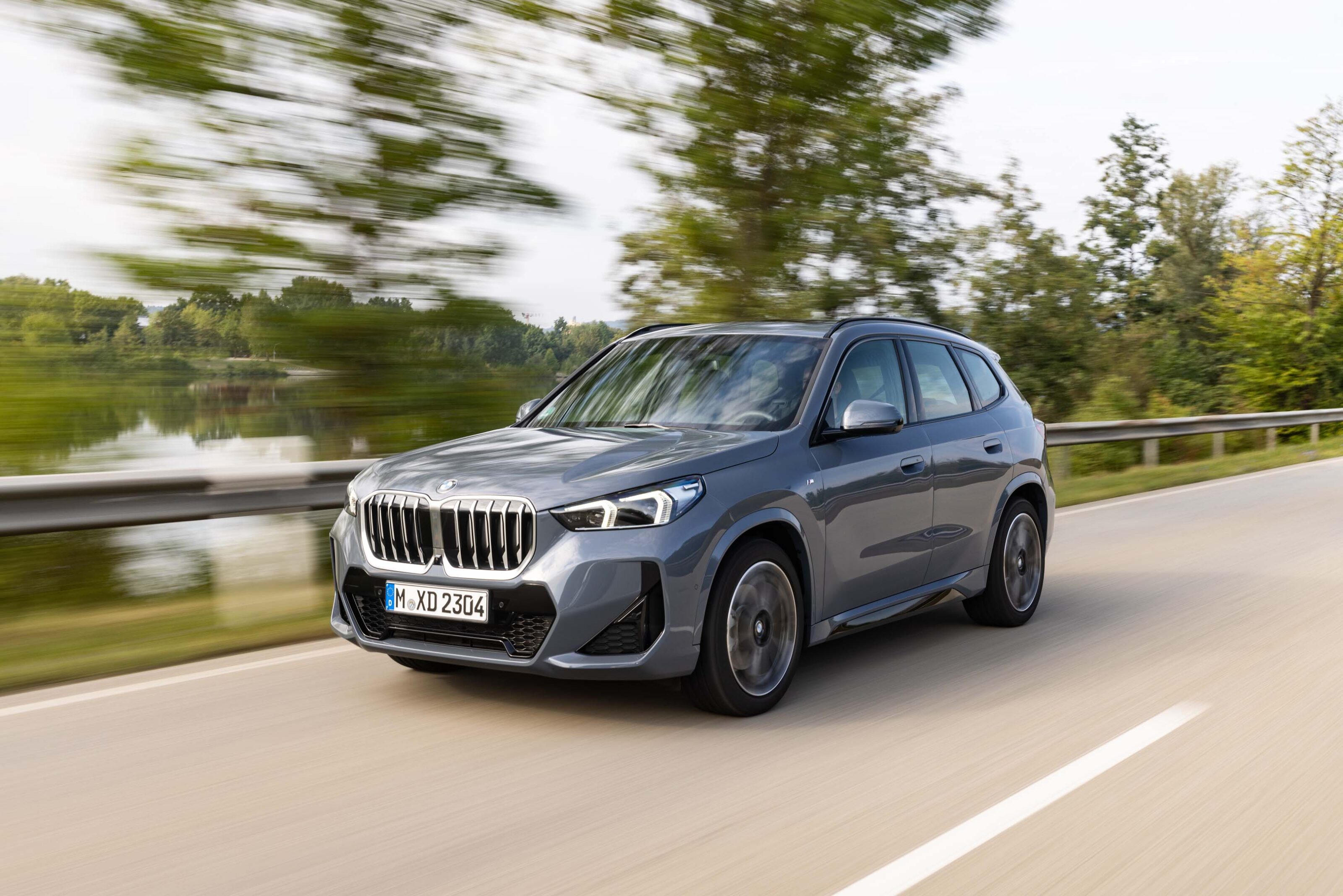
Handling is neat and tidy without providing outright fun. Which is right on the button for the small SUV class.
And it must grate with the likes of the VW Group brands that BMW resisted front-driven cars for decades before rocking up and nailing their dynamics pretty much immediately once profit margins finally dictated a change of heart.
Our final verdict on the X1’s ride quality had better wait until we try it on Australian roads – on well-kept German tarmac it felt accomplished, just with a slightly tough edge when riding on 19s. You can even option 20s, but we probably wouldn’t.
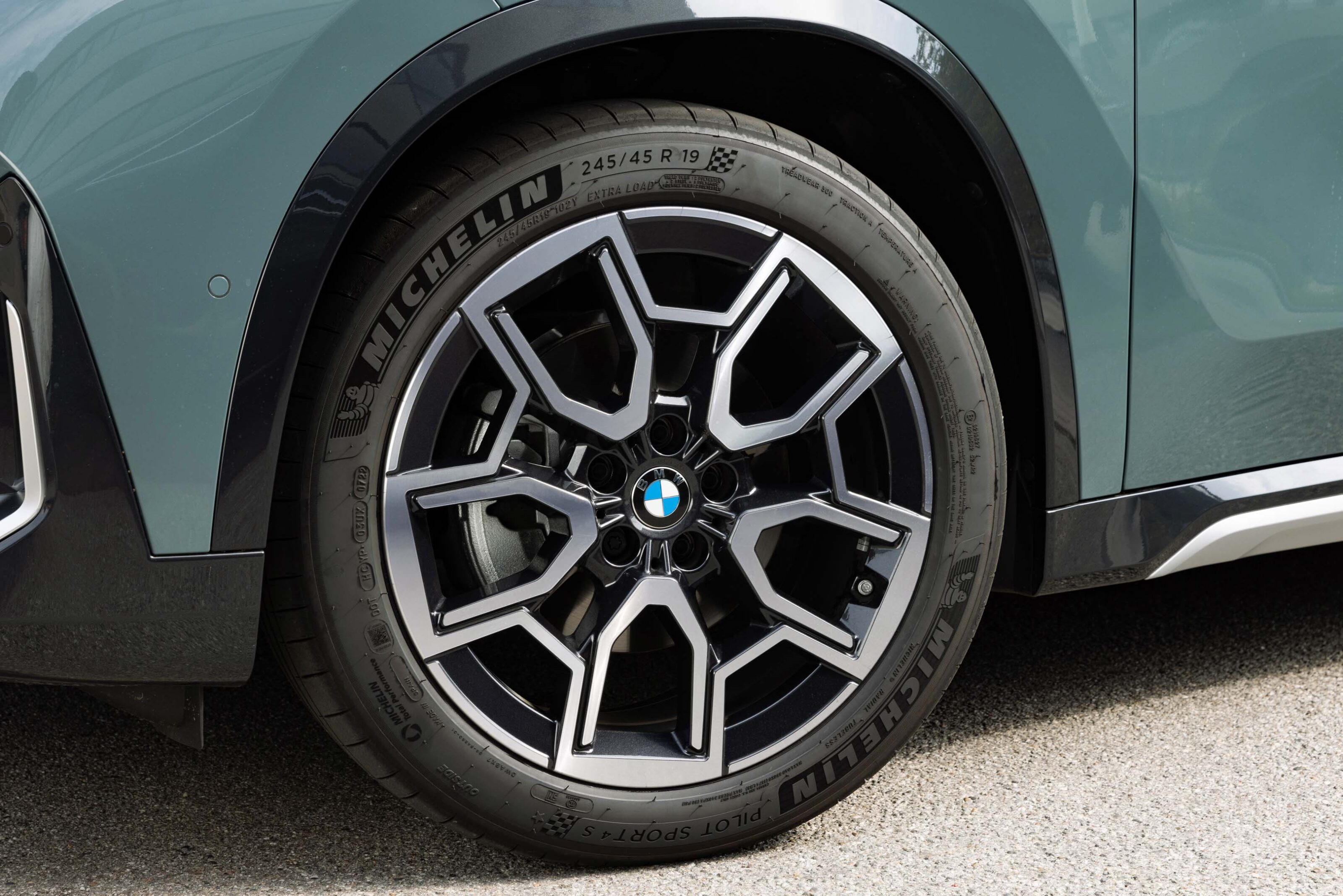
How is it on fuel?
The BMW X1 consumes 95 RON fuel, with the sDrive18i naturally the thriftier of the pair, claiming 6.5L/100km, while the xDrive20i quotes 7.4.
Neither figure is bad, given it’s two seconds quicker to 100km/h and drives both of its axles.
How safe is it?
The latest X1 is yet to be tested by ANCAP, though both of its forebears scored the full five-star safety rating.
Hopefully the same will ring true here. Park assist is standard fit, as well as a handful of other active safety systems, with steering and lane assist functions fitted to the 20i and optional on the 18i.
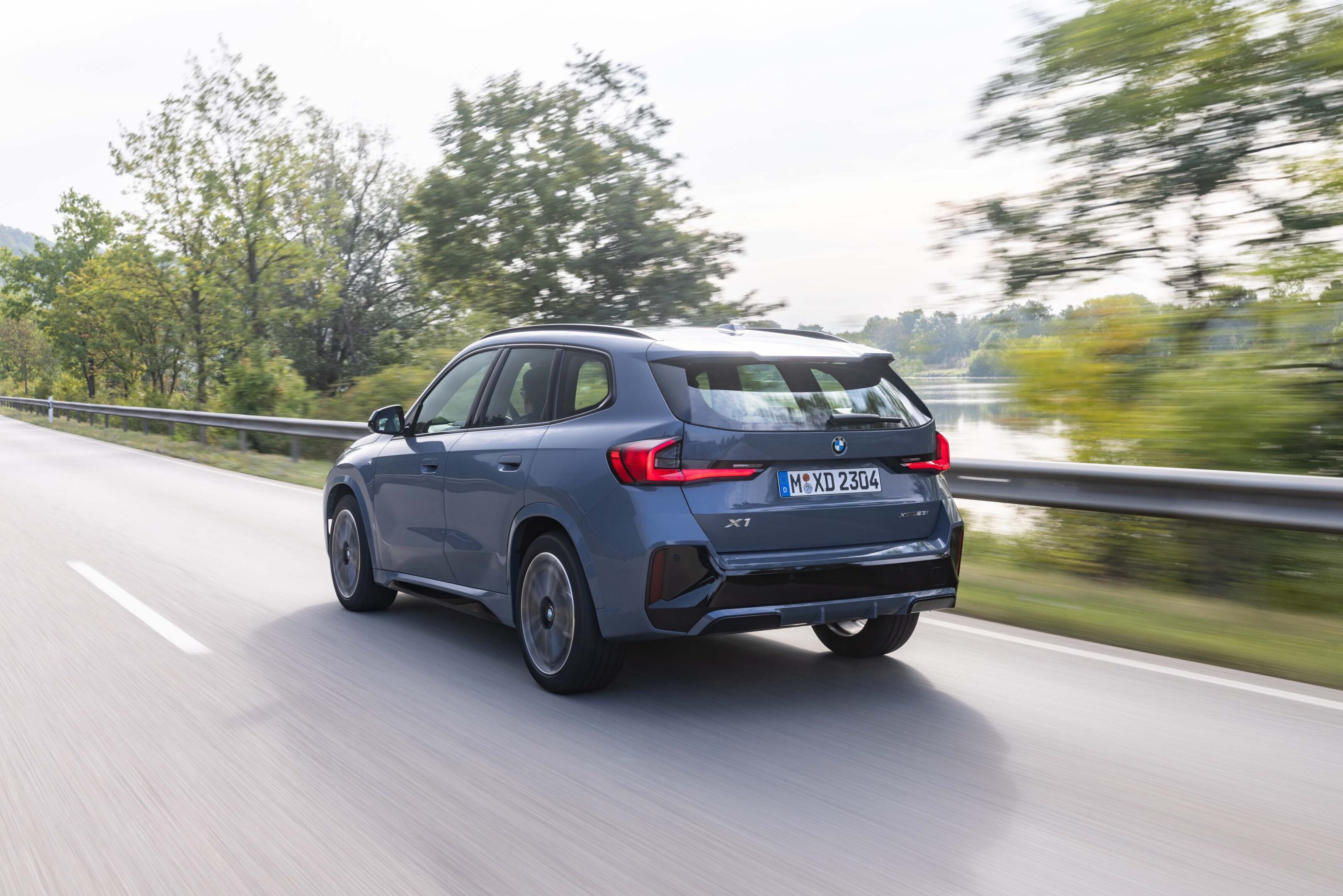
VERDICT
The X1 is better than ever, without exhibiting BMW at its very best.
We’re used to lavishing abundant praise on the way cars pumped out of Munich drive, but here it’s practicality and a rethinking of interior layout that impress most.
It’s a small SUV that’s no longer so small, to the benefit of how well it’ll slot into everyday life with nary a whimper from anyone on board.
Just don’t expect the dazzling powertrains or incisive dynamics we usually enjoy on propeller-badged products.
Also…
Now that you’re done reading our first review of the new X1, be sure to check out our review of its electric companion, the iX1. Hit the link below.
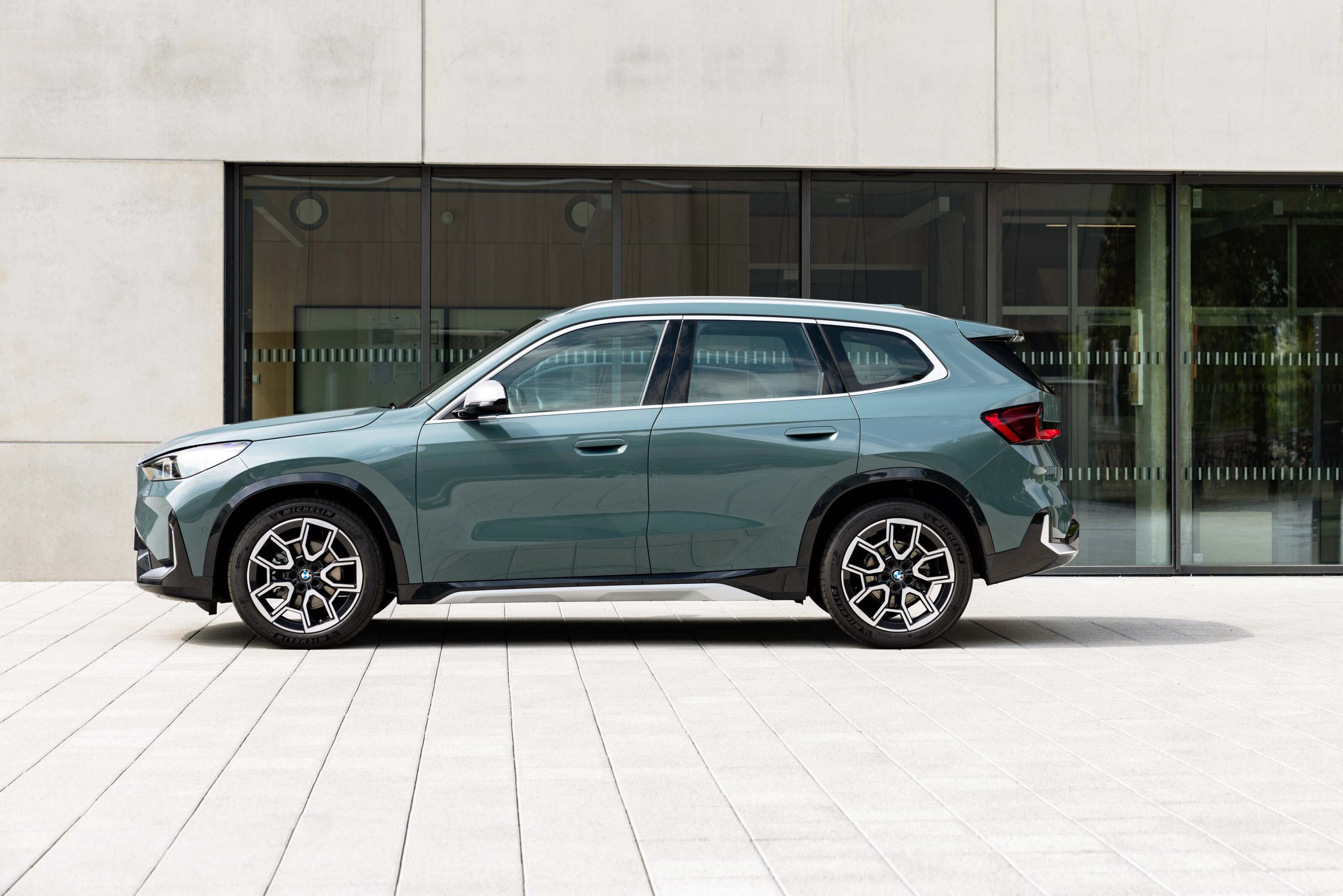
Score breakdown
Things we like
- Bigger and bolder than before, benefiting interior space
- BMW’s curved screen looks very appealing
- It’ll slot into life pretty easily
Not so much
- Lacks BMW’s usual handling verve
- Basic petrol engines a little overworked
- Other SUVs offer more glamour or intrigue
We recommend
-
 News
News2023 BMW X1 pricing and features for Australia
BMW's small SUV has also spawned an all-electric variant, with both models set for an Australian launch – and now we've driven both
-
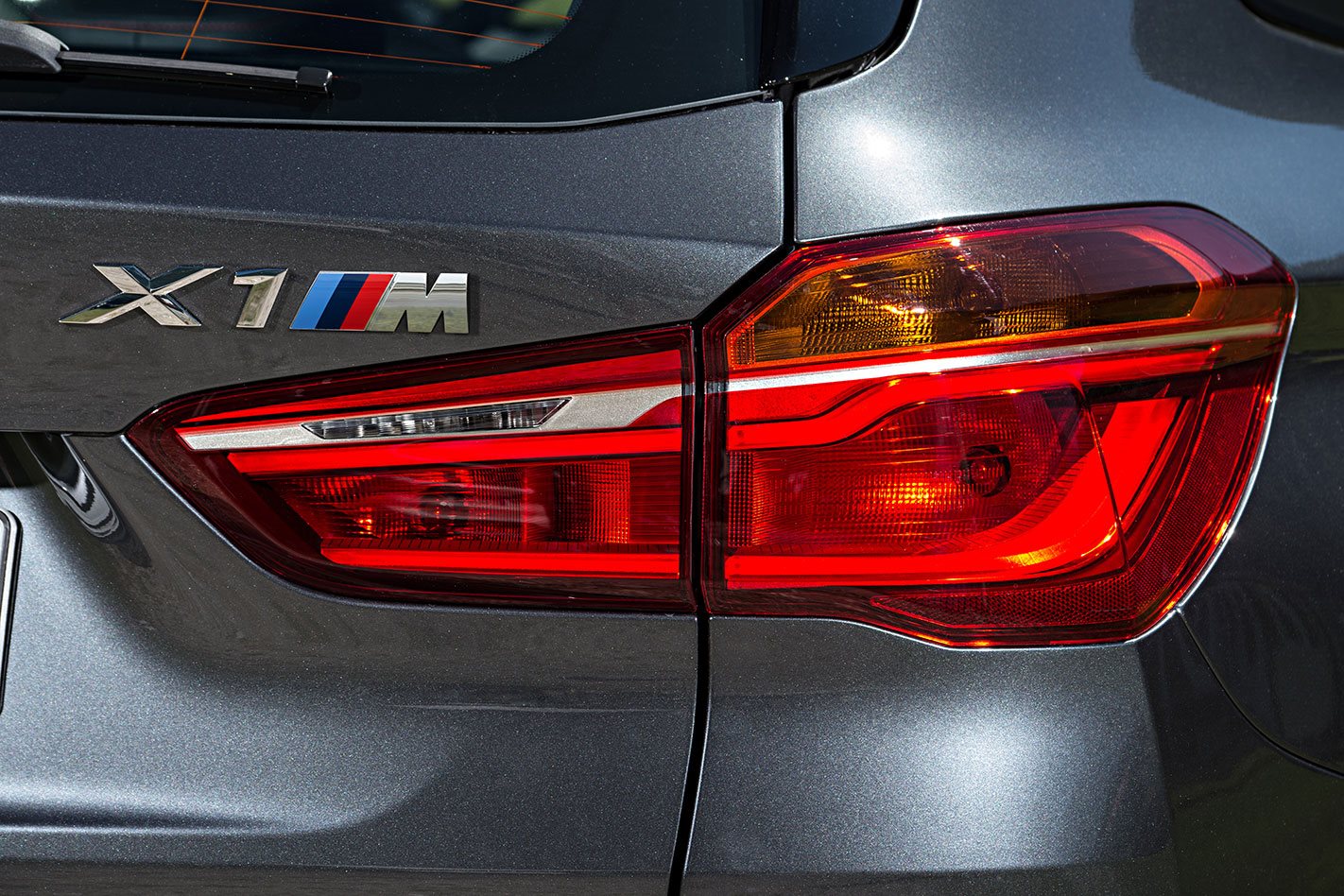 News
News2023 BMW X1 M rumoured following spy photos
Spy photos appear to show proof of an X1 M being developed by BMW
-
 News
News2025 New Car Calendar: All the new cars coming to Australia
Take a look at our list of what is expected to launch in Australia in 2025 – plus those we might not see locally just yet

